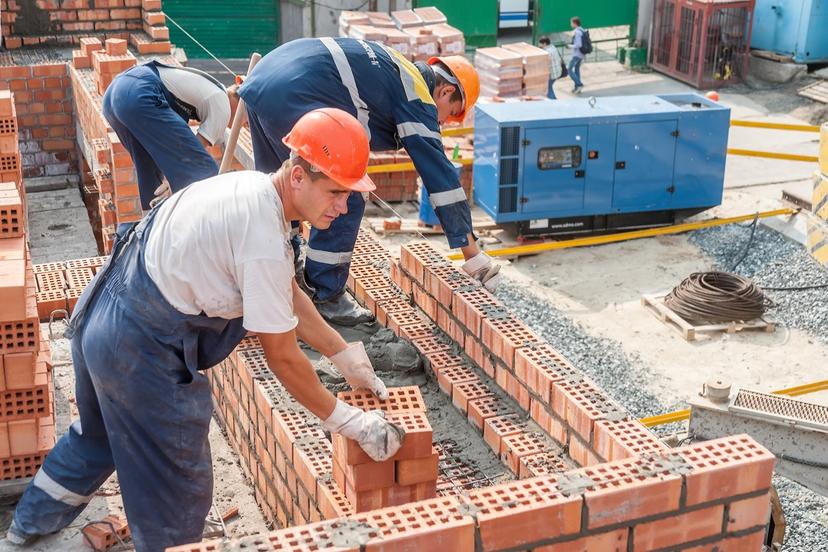Trades

Structure
Skilled trades workers are employed in the residential and nonresidential construction industries. They may work full time or on a contract basis; some work seasonally. Some are self-employed and may own their own businesses. The key laborers who work on construction sites include carpenters; brickmasons, blockmasons, stonemasons, and tile and marble setters; electricians; plumbers, pipelayers, pipefitters, and steamfitters; painters, paperhangers, plasterers, and stucco masons; roofers, and other construction trades workers.
Construction helpers assist with tasks such as carrying materials and tools and helping to set up equipment. Helpers learn the trade while on the job, and starting out as a helper is a common path for many careers in the trades. Many trade unions and contractor associations also offer apprenticeship programs. Basic qualifications for program entry are that applicants be 18 years old, have a high school education or equivalent, and be physically able to do the job.
Carpenters comprise the largest percentage of occupations in the building trades because of the wide variety of work they do, both indoors and outdoors. From constructing and repairing frameworks and structures of buildings to installing walls, roofs, and decks for homes, their tasks and work environment vary depending upon their specialty. They work closely with other construction laborers and helpers while on the job.
Carpenters follow blueprints and building plans for their work. They use hand and power tools, such as saws, sanders, nail guns, and welding machines, to measure and cut wood and other materials. They construct and install walls, floors, and doorframes. Carpenters also inspect and repair structural frameworks and fixtures. Carpenters may specialize as residential carpenters, who work in single-family, townhome, and condominium building and remodeling. They may also work as commercial carpenters, building and remodeling commercial properties such as office buildings, hotels, hospitals, schools, and shopping malls. There are also industrial carpenters, who work in industrial environments to build scaffolding and set forms for pouring concrete.
Brickmasons, stonemasons, cement masons, and other related workers use brick, stones, concrete, and other materials to build and repair walls, floors, walkways, fireplaces, chimneys, and other structures. There are also terrazzo workers and finishers, who create decorative floors, walkways, and panels, and tile and marble setters, who install marble and ceramic tiles to floors and other surfaces. Most masons are employed in residential construction. About 11 percent of masons are self-employed, and about 28 percent of tile and marble setters are self-employed.
Electricians inspect and test electrical components to troubleshoot electrical problems. They install wiring for lighting, communications, and control systems. They read blueprints for electrical systems to locate circuits and outlets. Electricians may work alone for small jobs or in teams with apprentices for more complicated projects. For new construction, they work closely with building engineers and architects in designing electrical systems. Electricians also work with elevator installers, heating and air conditioning workers, and other construction specialists. The types of electricians include inside electricians, who work in businesses and factories, residential electricians, who work in single- and multi-family dwellings, and lineman electricians, who install electrical lines that deliver electricity to customers. About 6 percent of all electricians are self-employed.
Plumbers work in homes, businesses, and factories, installing and repairing water, drainage, and gas pipes. They work on large water lines that supply water to buildings, and they also work on small lines such as those that supply water to refrigerators. They install fixtures such as sinks, toilets, and showers, and appliances such as water heaters, dishwashers, and garbage disposals. Some plumbers maintain septic systems. Pipefitters work mostly in manufacturing, commercial, and industrial environments, installing and maintain pipes that carry chemicals, acids, and gases. Steamfitters install pipes that move steam; most work at natural-gas power plants and college campuses. Approximately 9 percent of all plumbers, pipefitters, and steamfitters own their own businesses.
